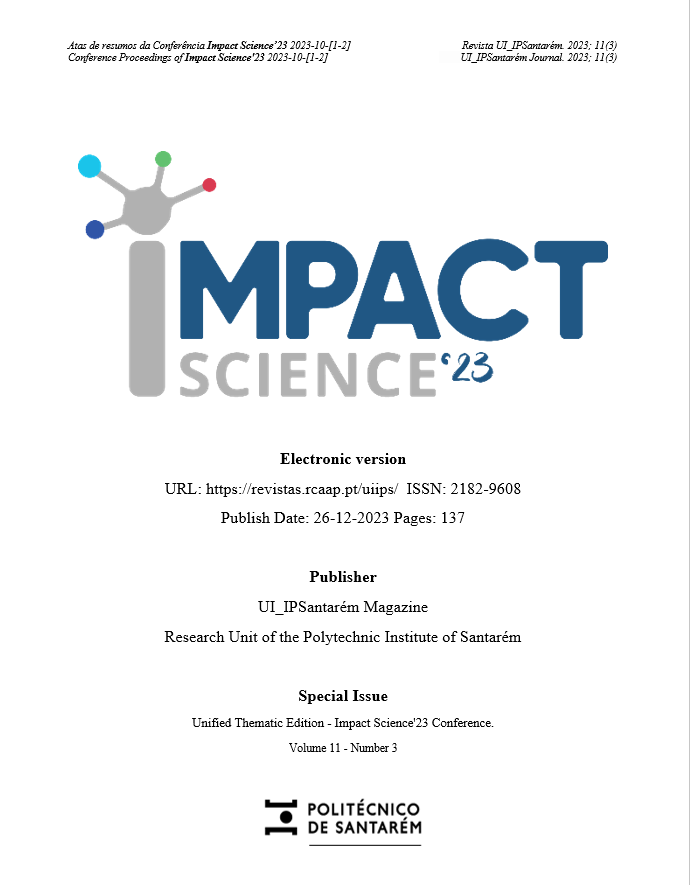Water use efficiency in maize crop under 4 irrigation systems
DOI:
https://doi.org/10.25746/ruiips.v11.i3.32555Keywords:
Digitalization in agriculture, Irrigation efficiency;, Maize, Water productivityAbstract
Water is an increasingly scarce commodity, where its use requires accurate and effective monitoring to avoid its overuse. The Pegada 4.0 project, among other objectives, aims to evaluate the water footprint of several crops, namely maize, a crop with high productive expression in the Ribatejo region, but also with high water consumption. The present study aims to evaluate the irrigation water productivity in maize crop, in 4 different irrigation systems - pivot, subsurface drip, surface drip and gravity. The experimental fields were installed at the experimental station António Teixeira, in Coruche. For this purpose, 4 soil moisture probes were installed in the 4 irrigation systems, under real conditions, which will allow to determine the water demand of the crop and to estimate the amount of irrigation to be applied, monitoring the water through the probes. In order to validate the information from the probes, soil samples from the 4 plots were analyzed in terms of granulometry, hydraulic conductivity and determination of stress-wetness curves, these parameters being verified at 3 depths - 0-20 cm, 20-40 cm and 40-60 cm, since there was previously a great spatial variability between plots in terms of soil characteristics. The particle size analysis was performed by separating the different fractions mechanically, the hydraulic conductivity was determined in saturated soil using Darcy's Law and the stress-wetness curves using the pots designed for their determination. The determination of the efficiency of the irrigation systems will be based on the information from the moisture probes, considering the variation of this same moisture in the soil, the amount of irrigation applied to the plants throughout the cultural cycle and the evapotranspiration of the crop, based on its cultural coefficients. This study aims to validate the most appropriate irrigation systems for this production system and thus contribute to a better management of the water resource in agriculture.
Downloads
Published
How to Cite
Issue
Section
License
Copyright (c) 2023 Margarida Oliveira, Artur Amaral, Diogo Cascareja, Gonçalo Rodrigues

This work is licensed under a Creative Commons Attribution-NonCommercial-NoDerivatives 4.0 International License.
Authors publishing in this journal agree to the following terms:
Authors retain copyright and grant the journal the right of first publication, with the article simultaneously licensed under the Creative Commons Attribution License that allows sharing of the work with acknowledgement of authorship and initial publication in this journal.
Authors are permitted to enter into additional contracts separately for non-exclusive distribution of the version of the article published in this journal (e.g., publish in an institutional repository or as a book chapter), with acknowledgment of authorship and initial publication in this journal.
Authors have permission and are encouraged to publish and distribute their work online (e.g., in institutional repositories or on their personal webpage) at any point before or during the editorial process, as this may generate productive changes, as well as increase the impact and citation of the published work.





